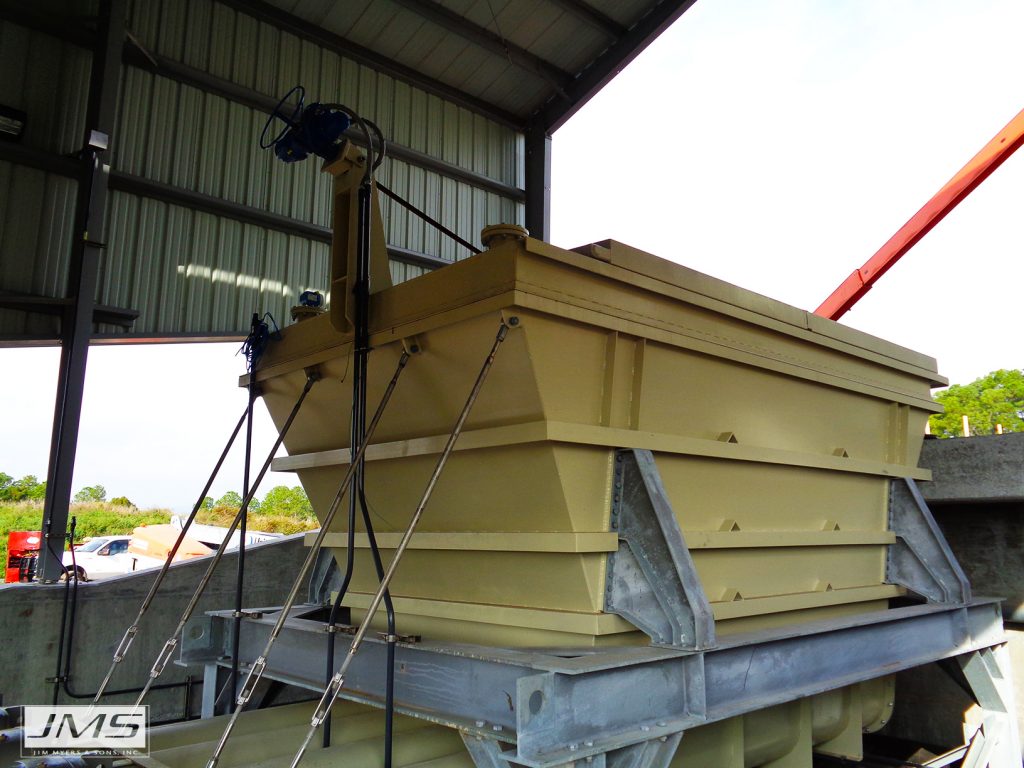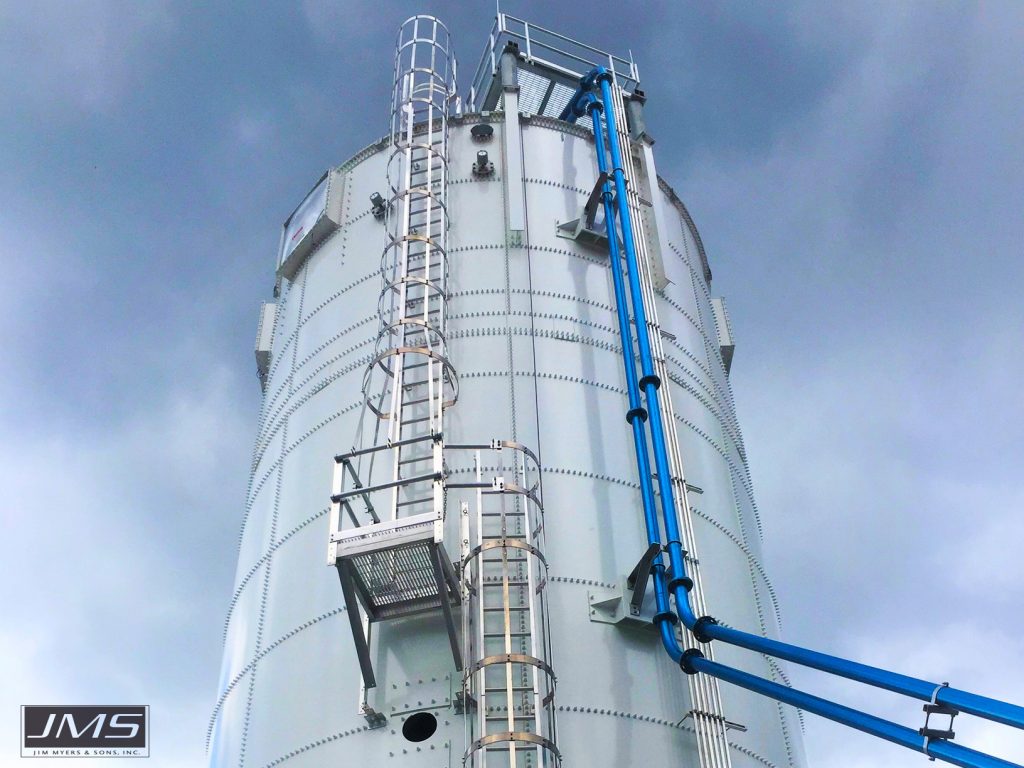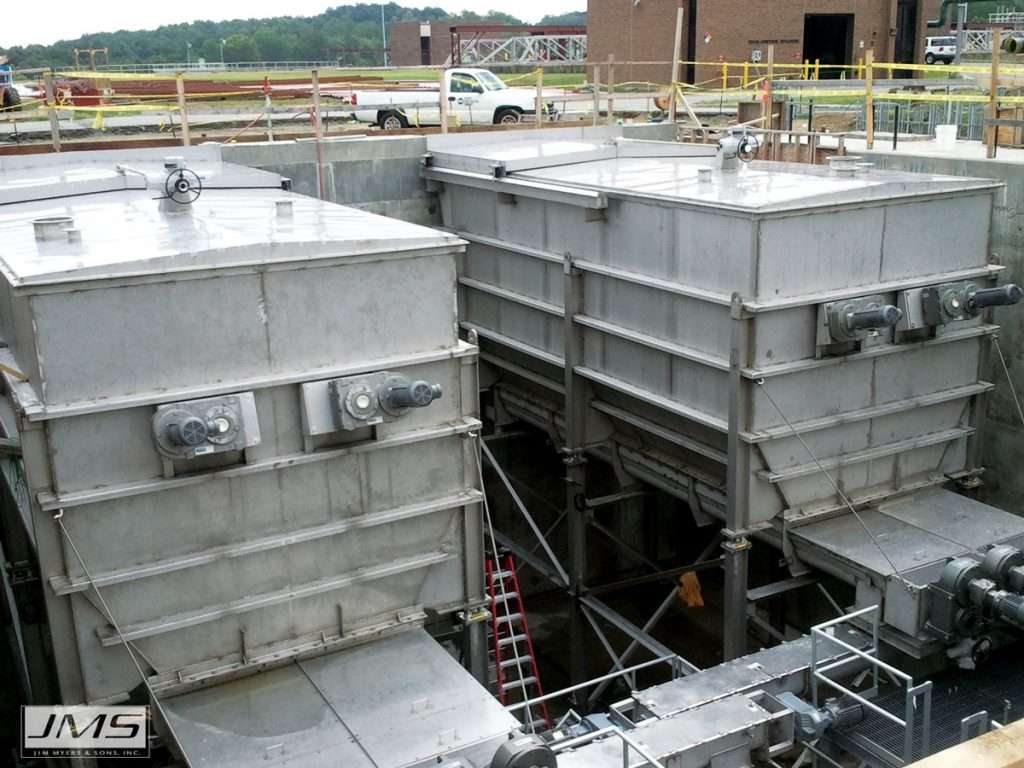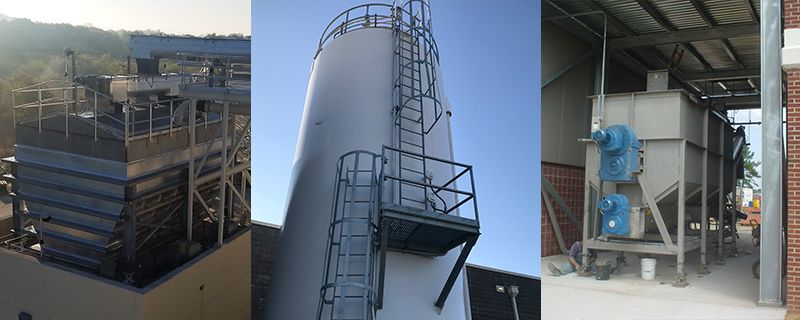Biosolids require storage for all types of materials from dried biosolid to dewatered sludge. When deciding on a biosolids storage solution there are 3 main options; hoppers, silos, and bins. Selecting the right storage solution can help keep a project in budget as well as optomizing storage space for your system.
Biosolids Storage Selection
- Hoppers
- Silos
- Bins
Biosolids Storage Selection: Hoppers
Hopper are either a rectangular or square storage vessel. Hoppers are used only for dewatered sludge applications. This is due to the amount of space required to store dewatered sludge. A hopper can have a larger volume of space and not require a high vertical space like a silo would. A hopper can either can have a bottom discharge or a metered feed to pumps. Hoppers are required to be field welded after they get past a certain size – this is due to the shape of hoppers needing structural integrity, unlike a silo where the shape of the vessel gives its structural integrity.

Pros of Hoppers
- Flanged bolted at the bottom of hopper and live bottom feed for long term maintenance
- Smaller hoppers can arrive on site with few parts
Cons of Hoppers
- Each hopper needs to be a custom size and built per project
- Larger hoppers require field welding
- Needing of external stiffeners
Biosolids Storage Selection: Silos
Silos are a cylindrical vessel. Silos are mainly used for dried biosolids but can also be used for dewatered sludge. A typical reason for not using a silo in a dewatered sludge application due to the volume of the material is that a silo can get too tall and for it to be too expensive to use a conveyor to distribute the materials to the silo. A silo typically is used for dried biosolids due to the amount of biosolids are created is less than a dewatered sludge. A silo can have two different discharge types; a cone and a chisel. A cone is the most common type of discharge. This is used when you have a single discharge to a chute, gate, conveyor or a pump. A chisel, on the other hand, is less common. This is due to the need for space, since a chisel discharge takes up vertical space. In return, this requires the silo to be taller to hold the same amount of materials

Pros of Silos
- Standard product that is more off the shelf than a hopper
- All sizes are on site bolted for easier construction
- Gets strength from shape of the silo only
Cons of Silos
- High restrictions for specific applications
Biosolids Storage Selection: Bins
Bins are similar to hoppers except they have an open or retractable top to allow materials to be top fed. Bins are typically used for dewatered sludge, but may be used in small apps for grit or screenings. Large sludge bins are typically used in receiving stations which have live bottom screws. Small grit and screenings bins utilize only slide gates for discharge.

Greg Hyde joined the JMS Sales and Marketing Team as Product Manager | Material Handling. Greg has over 30 years of experience in material handling systems, having held high level engineering, sales and business management positions with large full line conveyor manufacturers. He is responsible for overall support and growth of the JMS Bio-HANDLING product line. Outside of work, Greg is a founding member of the “Jammin’ 4 Water” (Water Charities Fundraising Inc.). In regards to his position, Greg says, “ JMS has a rich history in design, quality and material handling. I’m excited to be part of this great team and look forward to guiding the Bio-HANDLING product family for long-term growth.”

